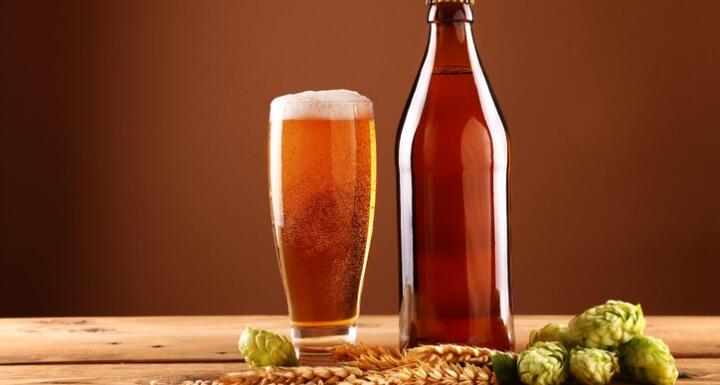Ed. Note: This is Part 2 of 2
What's in a name? Beer names can be funny, creative, and whimsical. But with the growing popularity of craft brewing, it's becoming increasingly difficult to come up with a name that isn't already taken.
In Part 1 of our series, we looked at the basics of trademarking beer names and how to acquire trademark rights. On tap of this article, pun intended, we'll explore more legal considerations when picking a name.
Selecting Trademarks in an Increasingly Crowded Field
A primary goal of trademark law is to prevent consumer confusion about the source of goods and services in the marketplace. To that end, trademark law protects the trademark owner against uses of identical or confusingly similar marks by others that are likely to cause consumers to falsely believe there is an affiliation between the trademark owner and the other user or confusion as to the owner's potential sponsorship or approval of the other user's goods or services. For this reason, the U.S. Patent and Trademark Office (the "USPTO") will reject a federal trademark application for a beer name that presents a likelihood of consumer confusion with trademarks that are already registered on the federal trademark register.
The test used to determine whether a new mark, such as a beer name, creates a likelihood of confusion with a preexisting trademark requires consideration of a number of different factors. But the essential inquiry is whether the marks are confusingly similar to each other, in terms of sound, appearance, and meaning, when used in the context of the goods or services sold under the marks.
Most brewers would probably agree that it is getting more and more difficult to find legally-available beer names. According to data published by the Brewers Association, the number of breweries in the United States has increased from 1,813 in 2010 to a whopping 8,884 in 2020. So it may come as no surprise to learn there are approximately 32,000 active registrations and pending applications for trademarks covering beer on file with the USPTO. Of course, not all of those are for the names of beers and breweries. They also include the taglines, logos, and designs mentioned above. But this still only scratches the surface of the challenges faced by a brewer when attempting to select and protect a beer name.
The USPTO has historically considered many beverages, including ciders, wines, liquors, and even energy drinks, to be goods that are closely related to beer. This is because, for the large national brands, at least, these products are often produced or distributed by the same companies, and they may appear near to one another on restaurant menus or grocery store shelves. As a result, the USPTO often refuses trademark applications for beer names based on an alleged likelihood of confusion with prior registrations and applications for names covering these other beverages. Worse yet, the USPTO sometimes refuses beer names based on prior registrations or pending applications for the names of bars and restaurants, under the theory that a significant cross-over between these industries exists. When you start to add up all the goods and services that the USPTO considers closely related to beer, the number of potentially conflicting trademark registrations and pending applications is probably well over 100,000. Given the high number of goods and services the USPTO considers closely related to beer, it's a wonder that any beer names can still be registered at all!
Finally, further increasing the risk and complexity for craft brewers are the many breweries, wineries, and other beverage makers who use product names on an unregistered basis but may have prior common law trademark rights to a name in a particular geography. For example, a North Carolina brewery might expend time and resources to federally register a beer name only to discover they cannot sell beer under that name in Nashville, Tennessee due to a local brewery that has been selling beer there under a similar name but was unknown to the North Carolina brewery until a conflict arose.
Given the realities of today's market, one can hardly blame a small brewery for not registering each and every one of their beer names. It is a fact that many brewery menus change frequently. A small brewer may introduce a beer on a test basis, without any immediate plans to package or distribute it. It may thereafter become a mainstay, only a seasonal offering, or be permanently discontinued within a few months if unsuccessful. By contrast, it is currently taking six months or more for many federal trademark applications to receive an initial review by the USPTO. A small brewer might wonder why they should spend the time and money to file a federal trademark application for a beer name that might be discontinued before the application is even reviewed. Yet, carefully considering trademark availability and registration, even for seasonal names, often reveals important issues that a brewery of any size would want to consider.
Fortunately, brewers pride themselves on being people who, though competitors, are willing to help each other out in a pinch and can usually resolve conflicts in a cooperative manner. This attitude has historically extended to conflicts over beer names and other trademarks. While some noteworthy conflicts have escalated to litigation and made the news, the vast majority are still resolved amicably, brewer-to-brewer, despite the crowded market. Of course, conflicts may still arise with parties outside the brewing industry, who may not be so collegial. Moreover, even amicable resolutions are typically going to be more favorable to the party that had the superior and better-documented trademark rights from the outset.
The bottom line is that due diligence is advisable when selecting any trademark. How much time and resources should be invested in that due diligence, and any legal protection sought, really depends on the brewer's plans for the product and the level of legal risk they are willing to accept. But if the brewer plans to invest substantial time and money to develop and build value in a particular brand, it's worthwhile in the long run to also invest in thoroughly vetting and protecting the associated trademarks. Doing so will decrease the risk of a trademark infringement issue arising that could cause the loss of the brewer's investments in the brand, or even worse, liability to someone else for infringing their mark. Perhaps even more important, doing so will provide legal benefits to the brewery as it develops its unique, and yes, whimsical, brand.








